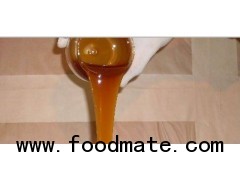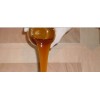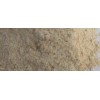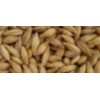To meet the growing demands of our clients spread across the globe we process a wide range of malt extract like dried malt extract and non diastatic malt extract prepared from finest quality ingredients. With the aid of our advanced extraction plant we have been able to produce bulk amount effectively. The procedure for converting malt into malt extracts involves 3 stages: liquification of the germinated grain, washing, filtering and evaporation.
Detail de
Our array of malt extracts are widely appreciated in the international market for its quality standards. Use of optimum quality ingredients and apt production facilities enable us to carry our malt extraction in an effective manner.
The procedure for converting malt into malt extracts involves 3 stages:
liquification of the germinated grain, washing, filtering and evaporation. The malt is finely grounded in a hammer mil and fed to mash tun where it is mixed with water. With passage of time and temperature changes, some of the starch is converted into ferment able sugars by diastatic system which involves the action of the natural a-and B-amylases. The cereal adjuncts which results in malt syrups mellower and sweeter flavors are added at this stage in form of corn grits.
The malt filter modules are made of plastic polymer, with hollow
The Malt filter consisted modules made of a Plastic Polymer. These modules were built up by a hollow
Variations in malt extracts or syrup are possible. Color solids, flavor, and protein are the basic characteristics which can be adjusted during production to provide specific malt extracts for given food applications.
SPECIFICATION FOR MALT EXTEAD Test Standard Appearance A viscous liquid amber or yellowish brown in color. Free from any adulterants, off odor, foreign flavor and impurities. Identification Positive for Carbohydrates Taste Characteristic Malt and sweet taste free from any detectable foreign or off flavor I.e. not be sharp or bitter or sour tail. Total Solid 78 to 82% Protein (% w/w on dry basis) Min. 4% Total Ash 1.3 to 1.7% Acidity (% w/v solution) 1.40% max PH( of 10% solution) 45.0 to 6.0 Reducing Sugar (%w/w as anhydrous maltose) Max. 60% Specific Gravity (At 20 deg. C) 1.3 to 1.5 Starch Negative Viscosity 60,000 to 2,00,000 cp Microbial limit test. SPC at 37 deg. C <10000 cfu/gm Yeast & Moulds <50 cfu/gm Coliforms Absent Staphylococcus Aureus Absent Salmonella Species Absent Profile of Carbohydrates Glucose (gm/100 gm) 3.9-8.6 Fructose (gm/100 gm) 0.4-2.0 Sucrose (gm/100 gm) 0.7-2.0 Maltose (gm/100 gm) 27.3-40










